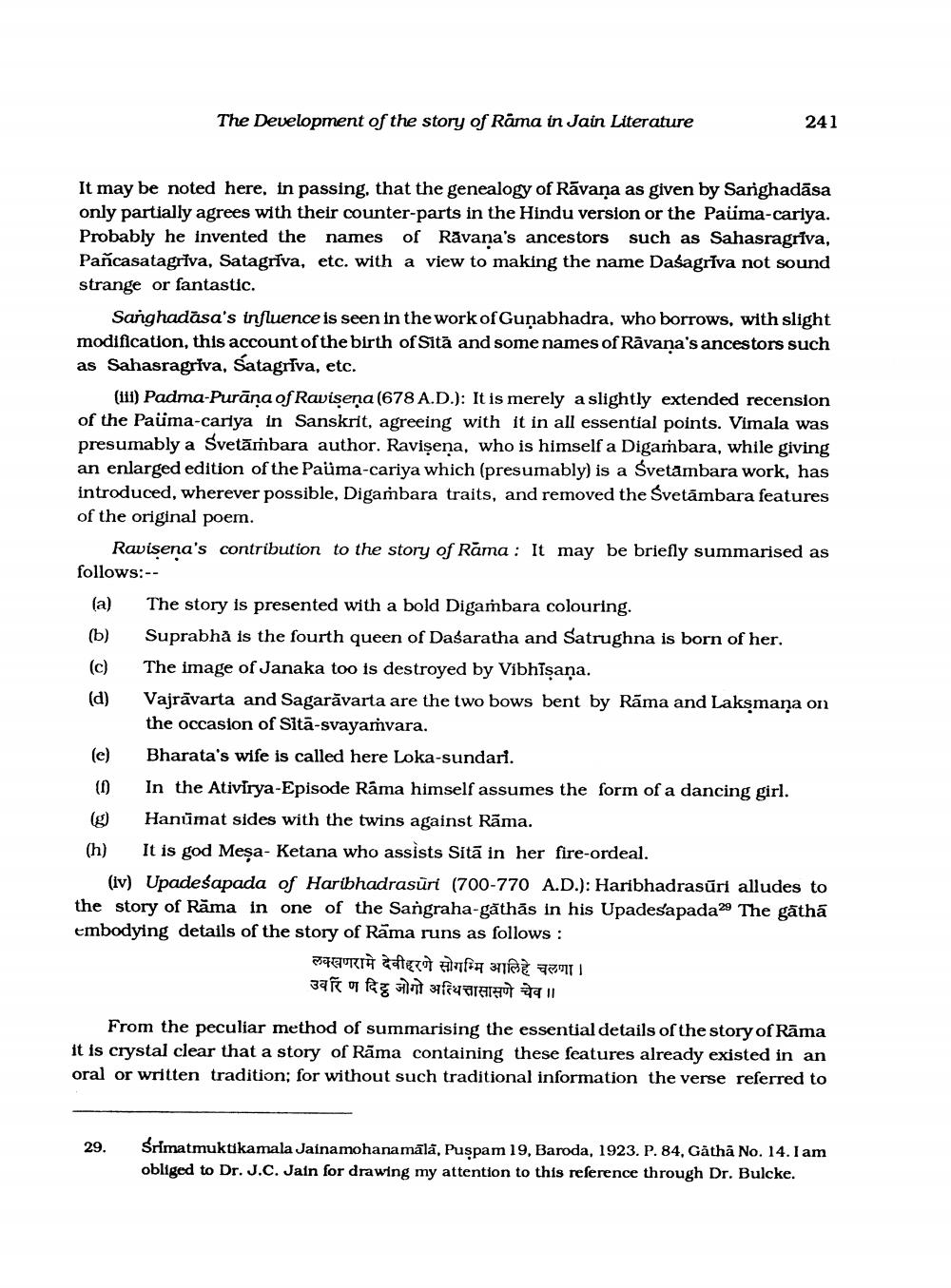________________
The Development of the story of Rama in Jain Literature
241
It may be noted here, in passing, that the genealogy of Rāvaņa as given by Sanghadāsa only partially agrees with their counter-parts in the Hindu version or the Pauma-cariya. Probably he invented the names of Rāvana's ancestors such as Sahasragriva, Pañcasatagriva, Satagriva, etc. with a view to making the name Dasagriva not sound strange or fantastic.
Sanghadāsa's influence is seen in the work of Guņabhadra, who borrows, with slight modification, this account of the birth of Sitā and some names of Rāvana's ancestors such as Sahasragriva, Satagrīva, etc.
(111) Padma-Purāna of Ravişeņa (678 A.D.): It is merely a slightly extended recension of the Paüma-carlya in Sanskrit, agreeing with it in all essential points. Vimala was presumably a Svetārbara author. Ravişena, who is himself a Digambara, while giving an enlarged edition of the Paüma-cariya which (presumably) is a Svetambara work, has introduced, wherever possible, Digambara traits, and removed the Svetambara features of the original poem.
Ravisena's contribution to the story of Rama : It may be briefly summarised as follows:-- (a) The story is presented with a bold Digambara colouring.
Suprabha is the fourth queen of Dasaratha and Satrughna is born of her. (c) The image of Janaka too is destroyed by Vibhīşaņa.
Vajrävarta and Sagarăvarta are the two bows bent by Rāma and Laksmana on the occasion of Sitā-svayamvara.
Bharata's wife is called here Loka-sundari. ( In the Ativirya-Episode Rāma himself assumes the form of a dancing girl. (g Hanümat sides with the twins against Rāma. (h) It is god Meşa- Ketana who assists Sitā in her fire-ordeal.
(iv) Upadeśapada of Haribhadrasuri (700-770 A.D.): Haribhadrasűri alludes to the story of Rāma in one of the Sangraha-găthās in his Upadesapada29 The gāthá embodying details of the story of Rāma runs as follows :
लक्खणरामे देवीहरणे सोगम्मि आलिहे चलणा। उरिण दिट्ट जोगो अस्थित्तासासणे चेव ॥
(b)
Sun
From the peculiar method of summarising the essential details of the story of Rāma it is crystal clear that a story of Rāma containing these features already existed in an oral or written tradition; for without such traditional information the verse referred to
29.
Srimatmuktikamala Jainamohanamāla, Puspam 19, Baroda, 1923. P. 84, Gatha No. 14. I am obliged to Dr. J.C. Jain for drawing my attention to this reference through Dr. Bulcke.




